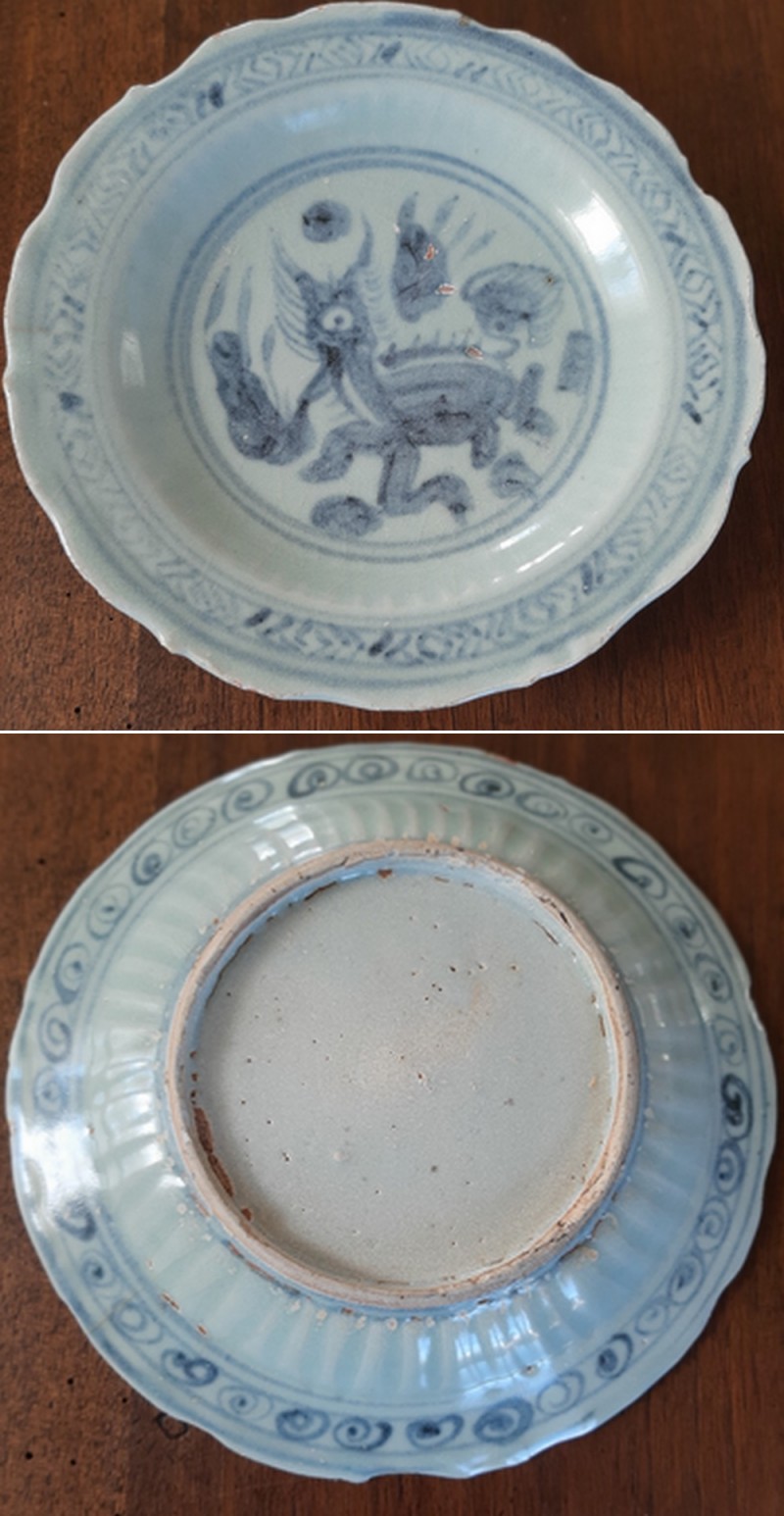
Dish of the Interregnum period, probably Jingtai (1449-57). A similar dish is illustrated in Regina Krahl & John Ayers, "Chinese Ceramics in the Topkapi Saray Museum Istanbul". Vol II, page 586, ill. 799. Decorated with a qilin in a roughly indicated landscape. Made for the southeast Asian market, therefore the quality was not essentially important.
Photo courtesy of Alain Collection 2023.
The Ming Dynasty (1368–1644) witnessed a golden age of porcelain production at the Imperial Porcelain Factory in the city of Jingdezhen, Jiangxi province. However, during a period of about 30 years, from 1436 to 1464, China was so chaotic, due to both man-made and natural disasters, that ceramics scholars have come to call this period the 'Interregnum'.
Reign marks on imperial wares were introduced during the Yongle era (1403–1424) and became a standard practice for all subsequent periods. However, no extant Ming ceramics bear reign marks from the Zhengtong (1435–1449), Jingtai (1449–1457), and Tianshun (1457–1464) periods, which were ruled by the two emperors, Zhu Qizhen and Zhu Qiyu.
Zhu is the family name of the entire Ming Dynasty clan. The House of Zhu, therefore, was the imperial ruling house of the Ming Dynasty (1368–1644), which continued as the Southern Ming Dynasty (1644–1662). It is necessary to clarify this because their personal names differ from the better-known names of their reigns
This lack of reign marks on ceramics from the time has posed a major challenge in accurately dating these objects and conducting comprehensive studies on them. This remained the situation until recent excavations at the site of the former Imperial Porcelain Factory in Jingdezhen revealed a whole new set of pieces. Through their stratigraphy, these pieces could be safely dated to the Interregnum period, between the Xuande (1399-1435) and Chenghua reigns (1447-1487).
The first and third emperor of the Interregnum was Zhu Qizhen ruling under two different reign names: Zhengtong (1436-49) and Tianshun (1457-64). The second reign, Jingtai (1450-1457), which occurred in-between, was ruled by his brother Zhu Qiyu who usurped the throne during his absence.
Problems began when, after the death of the highly competent Xuande Emperor, Zhu Qizhen ascended the throne in 1435 at the age of eight. Consequently, his rule was dominated by his mother and the court eunuchs. In 1449, the then-ruling Chief Eunuch sent him into battle against the Oirat (a Western Mongolian group) as the head of the Chinese troops. Unsurprisingly, the Imperial army was ambushed and defeated just outside of Beijing, and Zhu Qizhen was taken prisoner.
The Mongolian army was soon driven back to Mongolia, but they held Zhu Qizhen prisoner for a year before releasing him.
After Zhu Qiyu's (Jingtai 1450-1457) death, Zhu Qizhen was restored to the throne and continued his reign under a new name, Tianshun (1457-64), until his death in 1464 at the age of 37.
In 2014, the Jingdezhen Ceramics Archaeological Institute made an extraordinary discovery of a large number of imperial porcelains dating back to the Zhengtong, Jingtai, and Tianshun reigns. These remarkable findings, unearthed in the northern area of Pearl Hill in Jingdezhen, Jiangxi Province, significantly enhancing our understanding of the Interregnum. From these finds it appears that artistic innovation and experimentation not only survived, but thrived during this period of political instability.
From other finds from apparent folk kilns it also appears as minyao (peoples ware) reached an unprecedented low where underfired and carelessly drawn porcelain, possibly from coastal kilns (Swatow), was exported.
A